I threw a picnic in our garden the other day. We were busy with all…
The English steam fair
There is something very special about English steam fairs. I’m always fascinated by the colourful rides and games, tents, vehicles and the general ambience. A few weeks ago I went to the biggest independent steam fair of the UK, Carters Steam Fair. At first I thought it would be a great theme for photography but then I was intrigued by the history of steam fairs.
The history of steam fairs
Funfairs have their origin in medieval fairs and village fetes, where people would buy and sell different produce, as well as people would be hired for agricultural work and where people would gather on the village green to celebrate a good harvest. In the first half of the 19th century, the main attraction at fairs was the circus or menagerie where jugglers, clowns, acrobats, fire-eaters entertained the audience. Waxworks, freak-shows, mirror houses and lantern-slide shows were very popular during Dickens’ era. However, the traditional fair started to go out of fashion, fairs weren’t the centre of trade and commerce anymore and even the circus lost its glory.
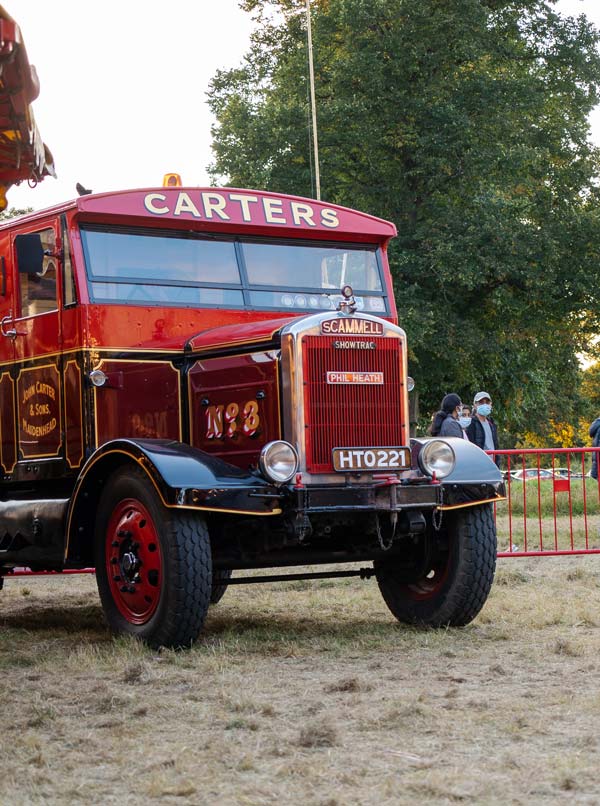
As the circus and fair declined, a new attraction was introduced that revolutionised and saved the Victorian fair. That was the first steam powered roundabout at Aylesham Fair in Kent in 1865. An engineer from Norwich, Frederick Savage got inspired and he started to make steam-powered roundabouts: a bicycle ride, the “Velocipedes” in the 1870s and a boat ride, “Sea-on-Land”. However, his most famous roundabout, the iconic “Gallopers” was made in 1891. Up until the outbreak of the Great War in 1914, funfairs consisted mainly of different roundabouts and swings and many rides that we know today were only created from the 1920s onwards. So the Victorian fair survived and the travelling fairs visited towns and villages year after year and fairs became a feature of the holiday calendar. Steam fairs had their hey day in the late Victorian and Edwardian period – it is no surprise that you can see a traditional steam fair in Downton Abbey as well.
The more traditional rides include the dobbies, the Gallopers, the train rides, the overboat and among the games, the striker. But let’s have a look at some of the rides you can still find at English steam fairs today.
Roundabouts
The dobbies
There are different types of roundabouts but the earliest one was the dobbies in the 18th century and these were built for small children. It’s a simple round-and-round ride and the mount is hanging on poles from the ceiling and it has no up and down movement. Small dobbies were propelled manually, bigger ones were operated by ponies or horses. The dobbies below is my favourite roundabout as it has many quirky elements like the running cockerel, the hungry-looking pig and a Lord Kitchener centaur. (Lord Kitchener was the face of the iconic poster recruiting for the Great War with the slogan ‘Britons want you’.)
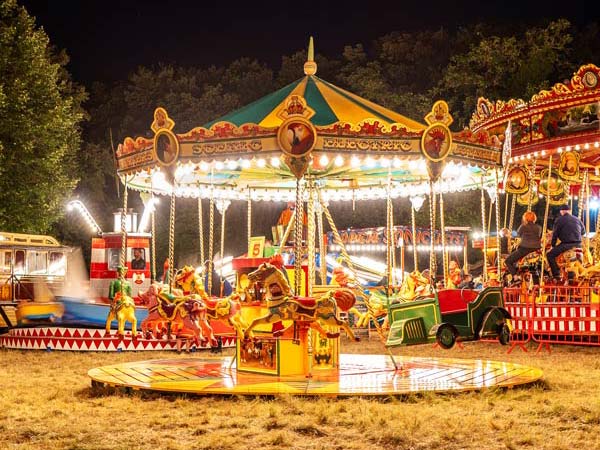
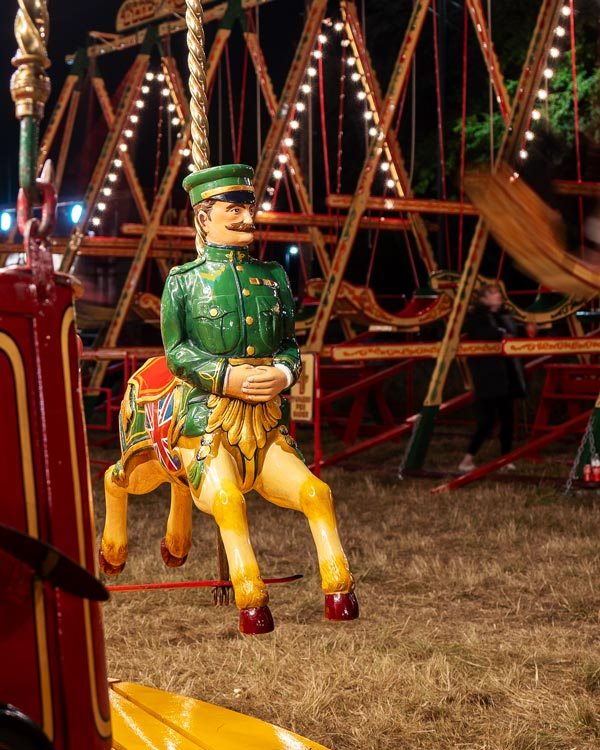
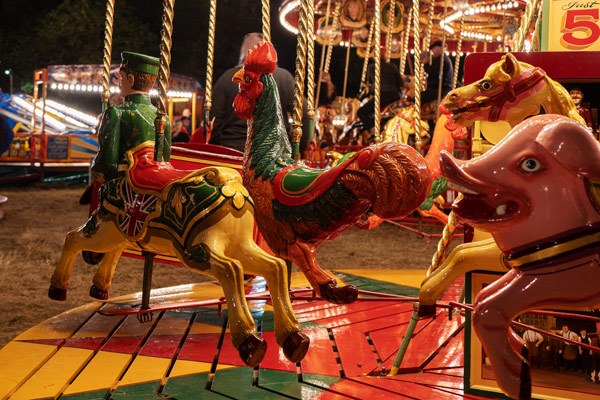
The Gallopers
Perhaps the most important thing about this ride is that it is called the Gallopers in England and not carousel. Carousels are the ones you find on the continent and in America. The major difference is that the Gallopers turn clockwise while carousels turn anti-clockwise. (Why am I not surprised…?) The other difference is that the horses in the Gallopers are all different (they even have names) whereas on the continent horses seem to be identical. Other distinctive features of the Gallopers are the traditional decoration which is painted by hand, the portraits of British monarchs hanging from the ceiling. Horses have different motion as well. The Steam Gallopers below was made in 1895 and was beautifully refurbished by Carters Steam Fair.
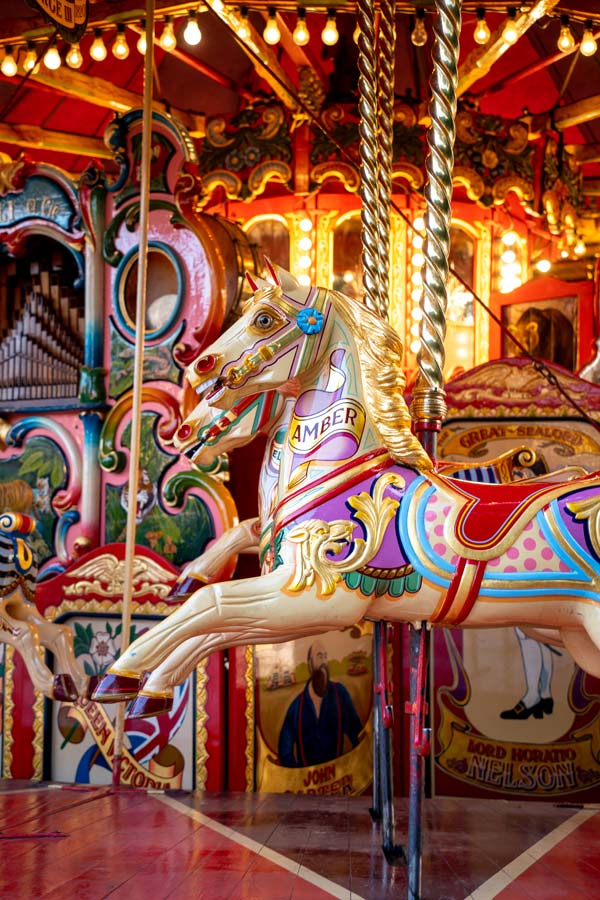
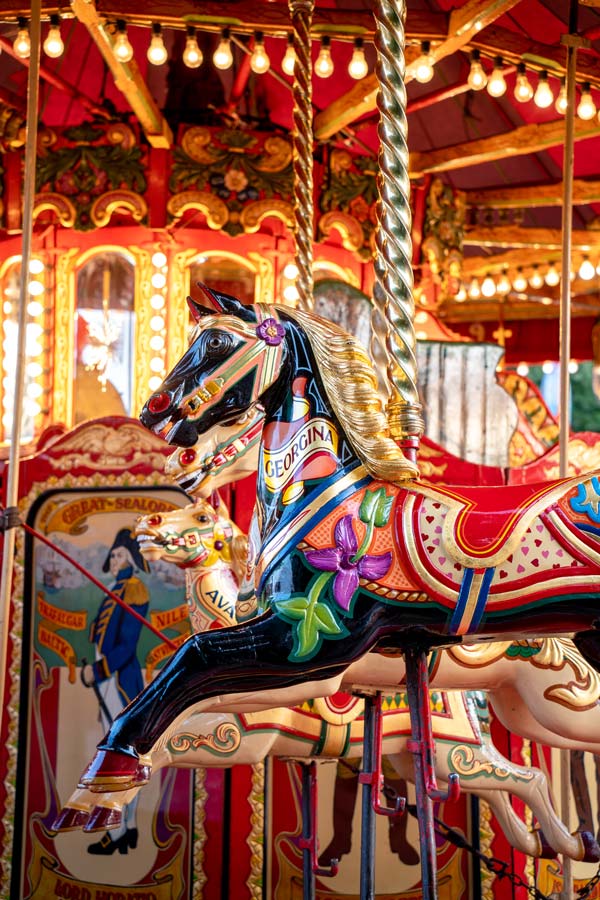
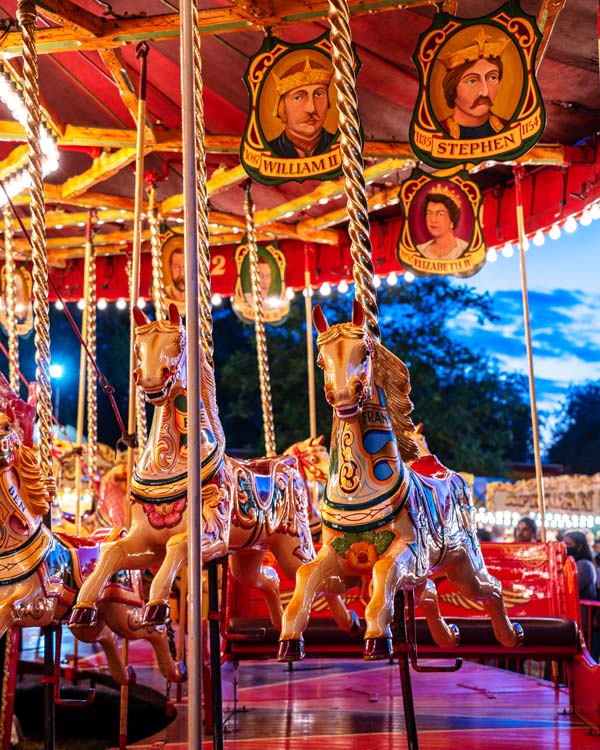
Chair o Plane
Chair-o-planes have become a distinctive feature of the English steam fairs just like the Gallopers. However, the chair-o-plane is a 1920s German invention. This one is a German made as well, but the direction of the ride was switched to clockwise when it was brought to England. (Well, of course…) The top of the ride is beautifully decorated with aircrafts and you can see emblems of different air clubs on the ceiling.
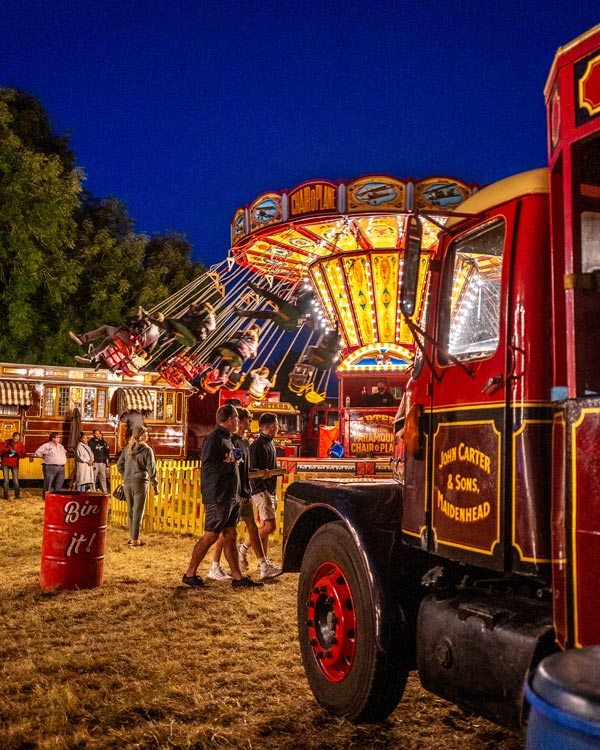
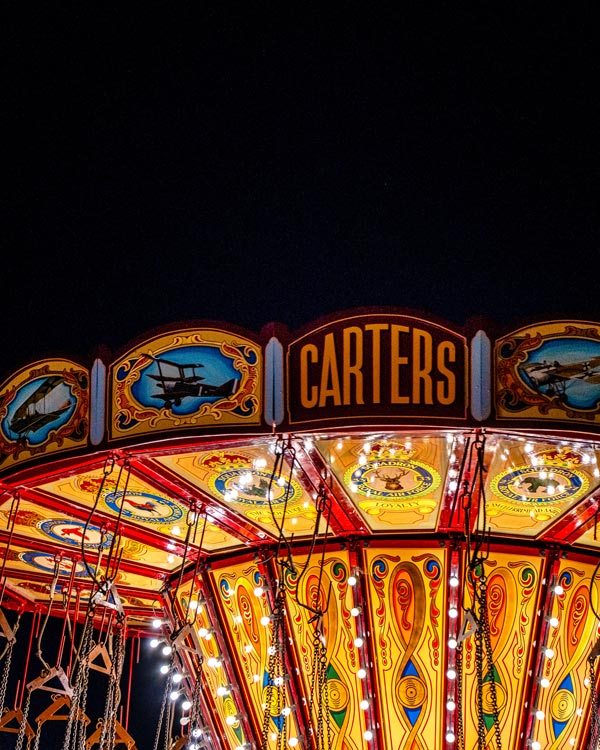
Train ride
Train rides became more popular with the spread of the railway network. They were produced mainly in smaller sizes, however, the Tunnel Railways by Savage in 1885 was quite big. It even had a covered part which was supposed to be the tunnel. Allegedly, the idea of having a tunnel between London and Paris was very much there already.
Overboat
Early overboats were used already in the 1700s (see painting of the Bartholomew Fair) and they were operated by horsepower. Later on the big wheel or Ferris wheel became the most iconic ride. The first big wheel was made in Chicago in 1893. It had a 70 m diameter and 36 cars each carrying 60 passengers.
Swings
Steam Yachts
Perhaps the oldest ride of all is the swing. Original, self-propelled swings had boat shaped vessels to sit in. In the 1880s swings were powered by steam and they were often named after the latest ocean liners. The one below is from the 1920s and is beautifully restored. I was just standing there admiring it. Steam yachts also had their own organ which didn’t only have to give excellent music but had to attract the eye. This one has 47 keys and is beautifully made – it certainly catches the eye.
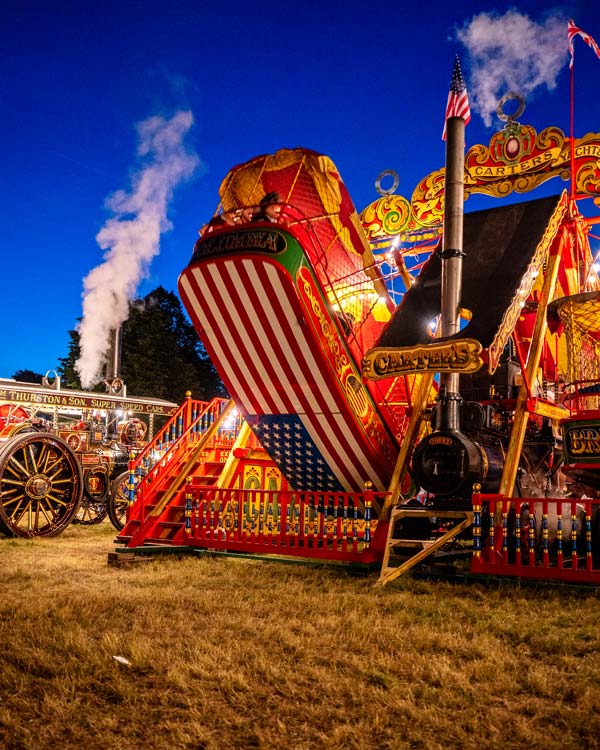

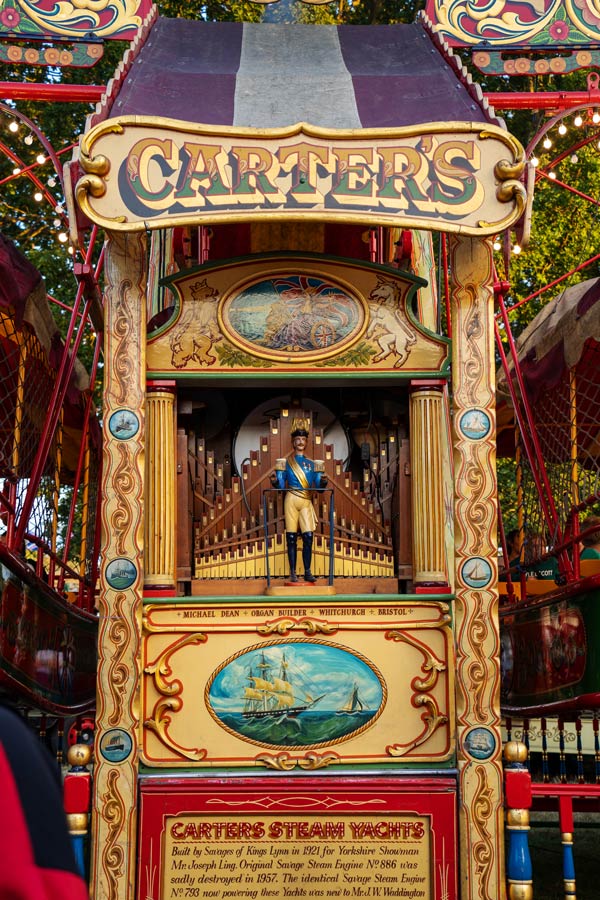
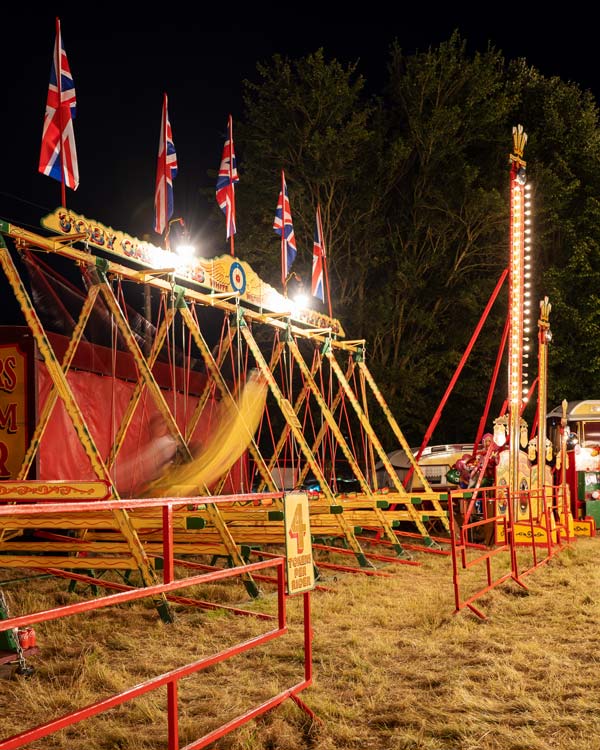
Other rides
Other rides like the Ark and the Autodrome are 1930s invention and are often decorated in art deco style. The Ark is a German invention. The Skid is a German invention as well and it became popular during the 1920s. The Octopus is an American ride from 1936 and it was called octopus because of the 8 arms.
The Dodgem was also an American invention and became fashionable in the 1920s and 1930s.
The Helter Skelter is basically nothing more than a slide, however it is an iconic ride of the British fairs. You can find some on the piers of seaside towns like Brighton or Blackpool. When I complained that there was no helter skelter in the steam fair we visited, Bill just said “Well, it’s not steam powered, so why would they have one.” 🙂 Fair enough.
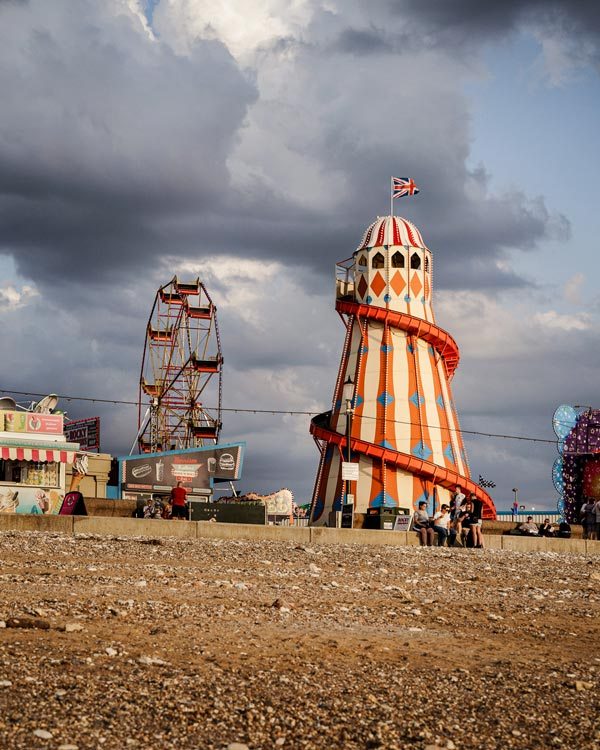
Games
Perhaps the most iconic game is the high striker which is a strength tester. Basically you have to make the bell on top of the tower ring by hitting the lever with a hammer. If the hit is strong enough, the puck will rise high enough to hit the bell. The striker below has three towers: the Mighty Striker, the Mother Striker and the Son Striker. Note the ostrich feathers on the top of the towers which possibly refer to the Prince of Wales, the later King Edward VII.
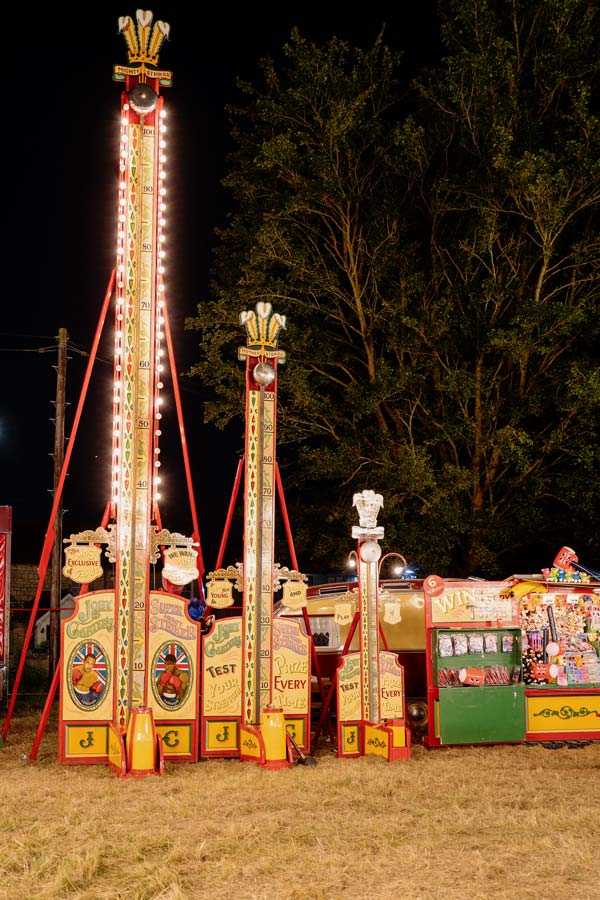
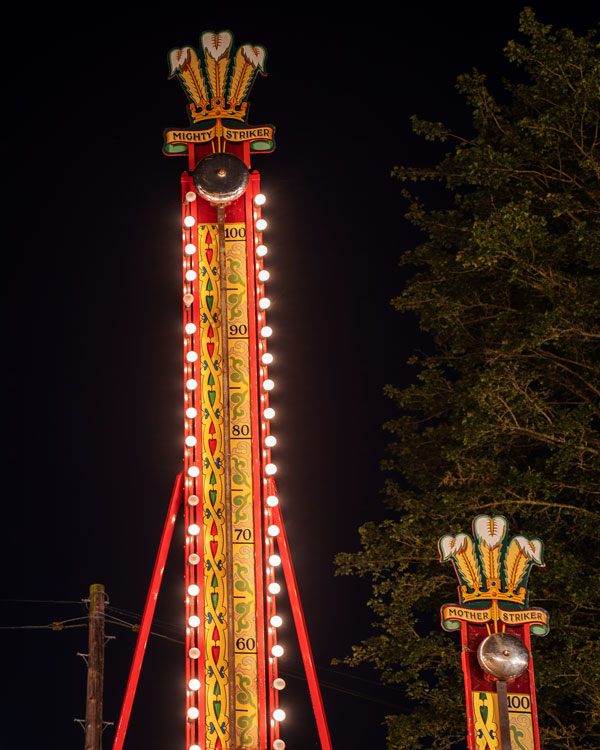
The Coconut shy is a traditional English game and I must say, I didn’t know it. Coconuts were exotic nuts in the 19th century so it was a big prize to be won at the fair. Striking cans and later on shooting saloons became popular. Another distinctive game is the hook-a-duck or hook-a-fish where the prize was marked by a number on the bottom of the fish/duck.
You can see a beautiful steam fair (Steam Gallopers, Chair-o-Plane, swingboats, coconut shy) in the Christmas Special of Downton Abbey’s 3rd season, A Journey To The Highlands and in the 18th series of Midsomer Murders, Harvest of Souls.

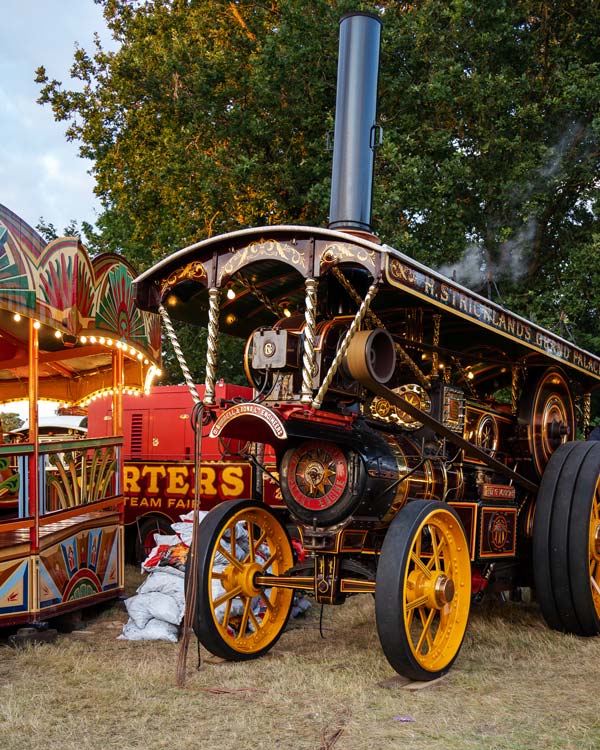
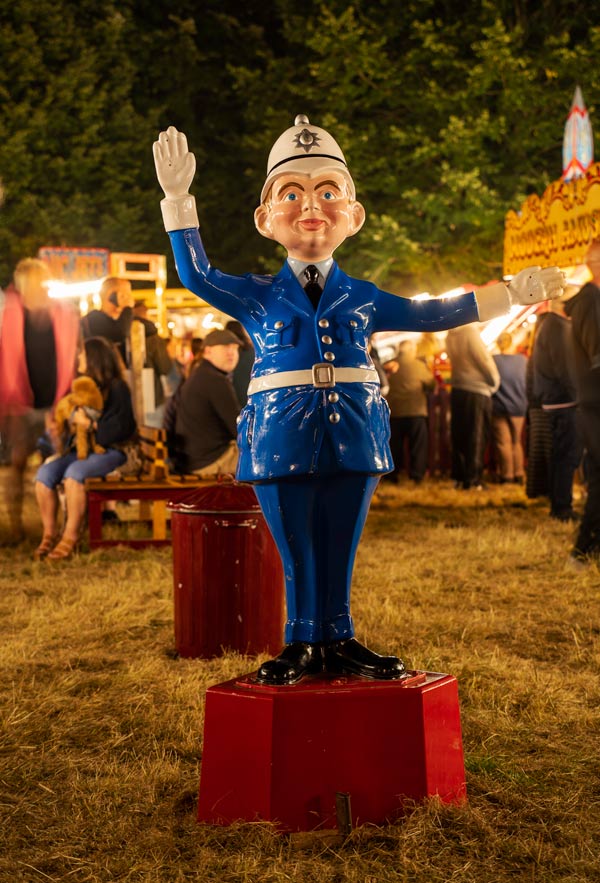
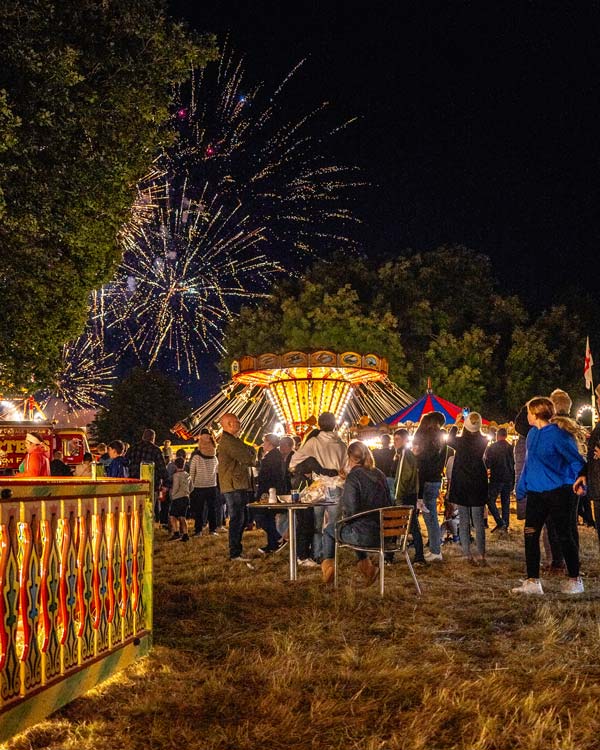
~
The English steam fair is a fantastic experience. Not only because of the beautifully restored rides and games but because of the fascinating steam engines that are equally restored and maintained. It’s amazing that these steam engines still work. Walking around the fair with hey on the ground and coal smoke in the air, seeing the old steam engines and playing old games, you are surely taken back in time. If you can visit a steam fair during your England trip, do so. You won’t regret it, I’m sure.




You are a brilliant and informative historian! Thanks for the fascinating lesson on fairground amusements.
I wish I was a historian! Anyway, I’m glad you enjoyed the history of the fairground.